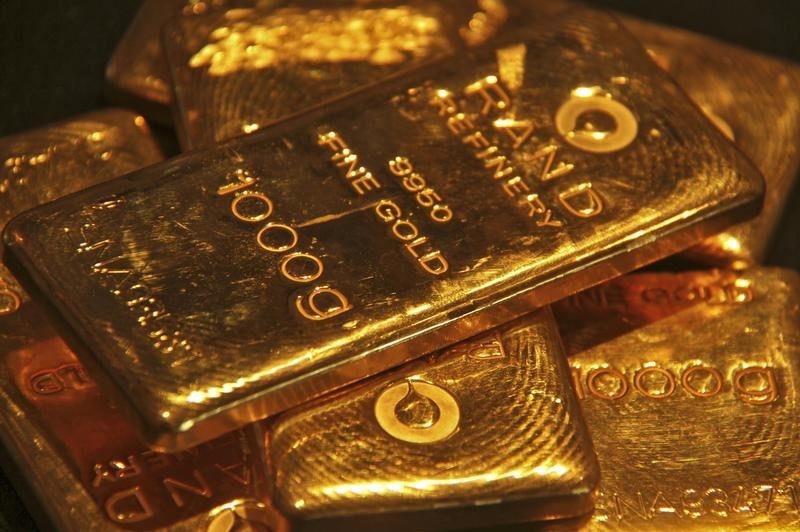By Ambar Warrick
Investing.com-- Gold prices steadied around multi-month highs on Friday as markets hunkered down ahead of key U.S. payrolls data that could factor into the path of monetary policy, while copper stuck to a two-week high on hopes of a Chinese reopening.
Metal markets were set for strong gains this week, tracking signals from the Federal Reserve that the central bank will hike interest rates at a slower pace in the coming months. Precious metals, which were pressured by a sharp rise in rates this year, were the main beneficiaries of this rally.
Spot gold fell 0.1% to $1,800.96 an ounce, but remained near three-month highs, while gold futures hovered near $1,814.70 an ounce- their strongest level in five months.
Both instruments were set to add about 3% this week.
Focus now turns to U.S. nonfarm payrolls data due later in the day, which is expected to show that the jobs market cooled slightly in November. But the sector has remained robust this year, with the Federal Reserve stating that it will seek more moderation in the space as it tightens policy.
Any unexpected signs of strength in the jobs market gives the Fed enough impetus to keep raising interest rates- a scenario which is negative for markets.
While Fed Chair Jerome Powell flagged slower interest rates in the coming months, he also warned that U.S. interest rates will likely peak at higher-than-expected levels due to stubborn inflation. This stifled some enthusiasm in risk-driven markets.
But the prospect of smaller rate hikes offered much relief to markets battered by rising rates this year. Platinum and silver futures vastly outperformed gold this week, rising more than 6% each.
Among industrial metals, copper prices fell slightly on Friday, but were also headed for a positive week on the back of growing hopes that major importer China will ease its anti-COVID policies.
Copper futures fell 0.2% to $3.7865 a pound, but were set to end the week over 4% higher.
Two major Chinese cities relaxed COVID-related curbs after an unprecedented wave of anti-government protests rocked the country this week. Demonstrations were directed against Beijing’s zero-COVID policy, which saw China maintain strict curbs on movement and activity over the past three years in order to contain COVID-19 cases.
But the easing measures this week drove up expectations for a wider scaling back of anti-COVID measures, which could help spur an economic recovery.
PMI data released earlier this week showed that economic conditions in China have deteriorated even further due to the zero-COVID policy.
